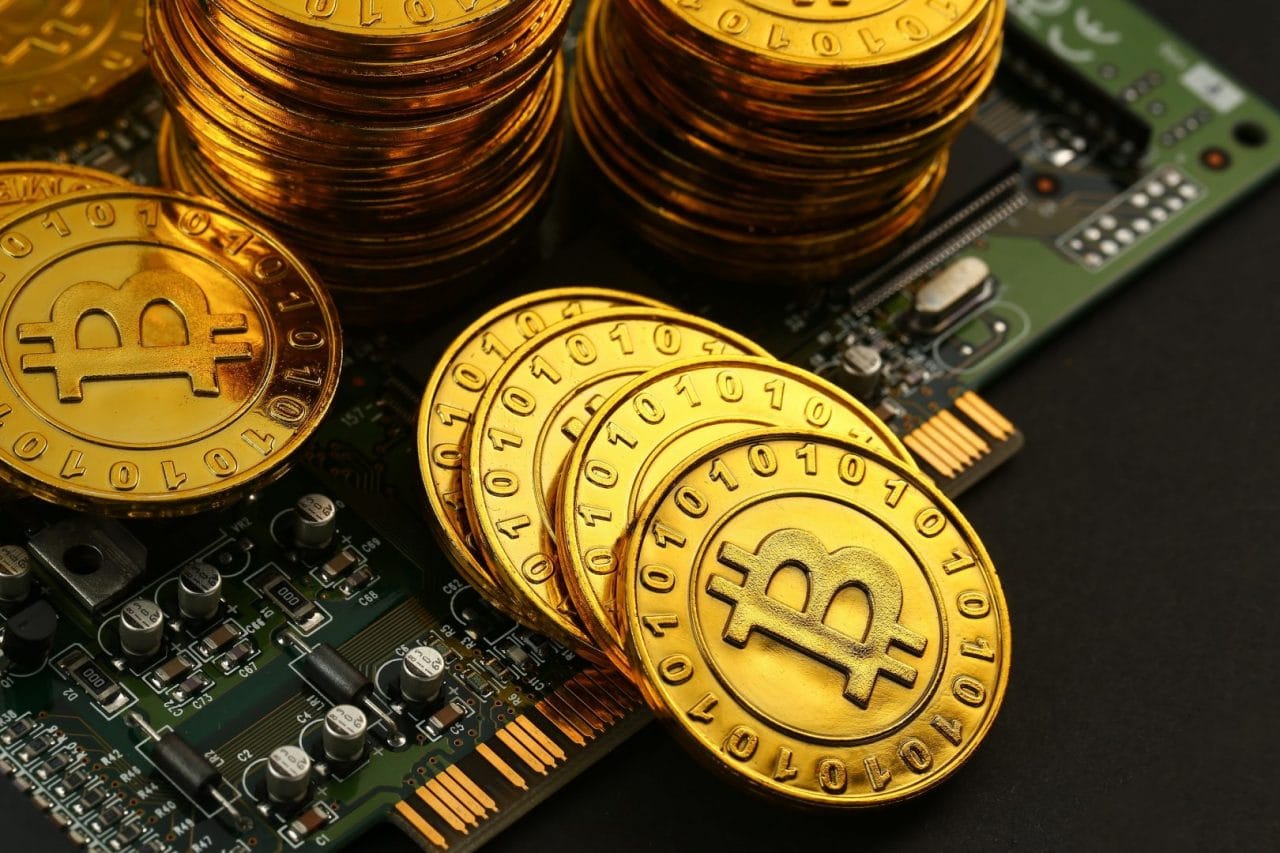An interactive art sale featuring over fifty digital NFTs, accessible by QR code, ensured that crypto fever reached all the way to Penn Station in New York City. Launched October 4, the ‘Art in Motion’ exhibition is curated by Plug Talk Media founder Nathan Nakhmanovich, who also goes by the name Mogul, and it transformed Penn Station into a first-of-its-kind digital art sale. Featuring non-fungible tokens (NFTs) from dozens of artists, the sale will include more than 200 media assets throughout Penn Station, which is considered to be the busiest transportation hub in the Western Hemisphere. Visitors will be encouraged to participate in the exhibit through advertisements on column wraps, clocks, rotunda banners, and stair risers, to name a few. They will be expected to scan QR codes placed on the ads that will unveil the digital artworks available for bid through the NFT marketplace OpenSea. The artists in the exhibition were hand-selected by Mogul and executive producer Eric Spivak, who also goes by the name Motivate. Nathan Nakhmanovich stated that “this campaign is a statement on the NFT revolution and the power of OOH. While other NFT galleries have used smaller public and private spaces, the ‘Art in Motion’ gallery will bring NFT to the real-world scale of public transit and showcase how to effectively drive attention from IRL to digital for the masses.”
With more than $2.5 billion in NFT sales occurring in the first half of 2021 alone, NFTs have been front and center this year. In March, an NFT was sold for a staggering $69 million. First introduced in 2014, NFTs can range from movies to music to memes, but they have become especially popular amongst artists and now serve as a new way to buy and sell digital artwork. Considered to be a great way to represent ownership of unique and often rare digital assets, NFTs are booming. “Art In Motion’ is a pivotal moment for us all to recognize. The innovative use of QR codes tied to Arts and Culture is providing huge opportunities for creators, collectors and curates alike,” said Eric Spivak. He continued, “From physical to digital and back, this is an envelope-pushing progressive project with purpose that I hope receives the attention, love and respect it deserves, while providing accessibility to the NFT space and hopefully changing the lives of both the artists and commuters in the process.”
Alexander Bercow, Partner Success Lead of OpenSea, stated, “We’re excited to be working with Mogul to showcase and support talented independent creators in the iconic Penn Station. We believe we’re only just scratching the surface of what’s possible with blockchains and tokenized media – and this activation is proof that NFTs are changing the way society interacts with art.” In the same way NFTs have brought the market for physical art to the digital world, OOH (Out of Home advertising) brings the digital world to public space and allows artists and brands to push and blur those boundaries. It often brightens otherwise dimly lit consumer areas, and OOH presents the perfect canvas for an experiential exhibition like ‘Art in Motion,’ which is quite capable of immersing an audience throughout each step of their journey.

Why crypto exchange Kraken predicts a $100,000 value for Bitcoin (BTC)?
A recently released report by the digital exchange company Kraken, a leading US-based crypto exchange, is of the opinion that the price of Bitcoin could touch as high as $100,000 before the end of this year. Citing data from previous years, the report indicated clearly that BTC’s price tends to surge during the fourth quarter of any given year. The exchange continued that this period has always seen “an average and median return of +119% and +58%, respectively.” As most readers know, Bitcoin’s value, from the earliest of days, has always attracted different price predictions from many crypto analysts and sceptics alike. Kraken believes that using the fourth quarter results from previous years, that BTC could finish this year very close to $100,000, so long as the average returns from previous years occur once again. Using the words directly from their report, “at BTC’s quarter-end closing price of $43,800, a +119% return in 4Q2021 would put BTC at roughly $96,000.” They did, however, go on to state that if we were to see the advent of its median return, rather than its average return, this would mean BTC could be finishing the year at around $70,000. If you have been watching the price action, the value of the crypto king has been on a rally since the beginning of October and has been hitting heights it hasn’t touched in the previous months. According to data from CoinMarketCap, BTC’s market cap is now back over $1 trillion.
Regarding other digital assets, the Kraken report was of the opinion that the number of Ether being burned daily was largely being pushed by decentralized exchanges and demand for NFTs.
According to the exchange’s report, “activity on NFTs and DEXs (decentralized exchanges) make up most of ETH burned.” They then added, “a decline in demand for NFTs and activity on DEXs could result in ETH being less disinflationary and subsequently temporarily soften demand for the crypto asset.” The report concluded, however, that the EIP-1559 upgrade has had a positive effect on the volatile nature of Ethereum fees.

On-chain data shows Bitcoin (BTC) whales are ‘hodling’ on as BTC nears $60,000
Glassnode’s report for the first week of October revealed that Bitcoin’s (BTC) recent constructive price action reflected upward trends in accumulation and HODLing behavior (those holding BTC long-term), as well as elevated on-chain activity and increased network utilization. However, simultaneous with the positive price action, it seems derivatives markets recorded an influx of open interest, futures premiums, and positive funding rates, which are, according to the blockchain data and intelligence provider, enhancing the likelihood of a “leverage squeeze.” Last week, the price of Bitcoin persisted within a tight consolidation range, between $53,657 and $56,250. Following a strong rally from September’s lows, the market succeeded to hold onto its gains, and on-chain activity increased. The Glassnode report read, “Active Entities, the count of individual participants on-chain each day, has grown 19% to this week, reaching around 291k active entities per day. This value is on par with counts from late 2020 at the beginning of the last bull run.” While recounting that the boosted network activity has “historically correlated with growing interest in the asset during early-stage bull markets,” the report revealed that the typical coin value of transactions has also increased.
According to Glassnode’s data, since the middle of September, the median transaction size has steadily risen, and the report pointed out that, “an increased typical transaction size is not synonymous with price appreciation, but indicative of larger, and even institutional-sized capital flows present on-chain.” Additionally, the dollar value of volume moving on-chain has also increased during the past week. Transfer volume (USD) as a percentage of the realized cap broke above the 3% threshold, another historically bullish signal, suggesting an increase in demand for on-chain settlement of value. Glassnode explains that the ratio between the two metrics “gives a sense of the level of demand volume relative to the value of the coin supply valued at the time it was last spent on-chain.” Meantime, the supply held by Long-Term Holders (LTH), revealed the HODLing mentality’s strong persistence.

Ethereum (ETH) developers looking to delay difficulty time bomb, what could this mean?
Towards the end of the first week of October, Ethereum developers (devs) Tim Beiko and James Hancock posted proposal 4345 which is meant to delay the difficulty time bomb until May 2022. The difficulty time bomb refers to a process that would make Ethereum mining increasingly harder to do, with the goal being to arrive at a point where mining is no longer profitable. When that happens, the blockchain would grind to a halt as miners switch off their equipment or move their mining resources to other chains. This intends to gradually phase out miners as part of Ethereum’s switch from proof-of-work (PoW) to a proof-of-stake (PoS) network. Throughout this transition process, the mining community itself has undergone a great deal of uncertainty. Although ETH 2.0 is inevitable, there is no doubt that miners are happy to prolong the current situation to maximize their profit potential. What can be deduced from another proposed delay to the difficulty time bomb?
The London upgrade, which went live on August 5, was all about proposal 1559 – fee market change for more predictable gas fees. However, this upgrade also contained a number of other proposals. Under proposal 3554, the difficulty time bomb had already been delayed until December when the London upgrade rolled out. Gearing up for ETH 2.0, difficulty time bombs have been detonated twice in Ethereum’s history – once in 2017, and more recently in November 2019 under EIP 2387. But a reluctance to detonate another time bomb suggests Ethereum devs aren’t ready to start the process of phasing out miners altogether just yet. Under October’s EIP 4345, the devs are looking at detonating the bomb mid-way through the second quarter of 2022, and they added that the bomb can be readjusted for a longer burn until mining is impossible, or that it might be removed altogether. From the proposal: “Targeting for the shanghai upgrade and/or the merge to occur before May 2022. Either the bomb can be readjusted at that time or removed altogether.” The latest info from developers ConsenSys informs us that “the merge” is set for Q1/Q2 2022. Making the switch to PoS involves running the ETH 1.0 and ETH 2.0 chains parallel with one another until some future date when both chains can be merged. This would be when Ethereum ceases to be a PoW blockchain, and some see this as the point when Ethereum 2.0 goes live. But there is an additional phase, “Shard Chains,” in their latest proposal, which is said to improve scalability, and that is set to roll out in late 2022. If EIP 4345 occurs in Q2 2022, then the merge cannot happen until some date after then, and this would suggest ETH 2.0 is running behind schedule.

MassMutual Bitcoin Investment Has Tripled In Dollar Terms
The Massachusetts Mutual Life Insurance Company (MassMutual) has more than tripled the dollar value of its Bitcoin investment in under one year. The insurance company bought an undisclosed amount of BTC for $100,000,000 on December 10, 2020, when the Bitcoin price was hovering around $18,500. MassMutual secured their $100 million Bitcoin purchase through institutional Bitcoin services provider NYDIG. At that time, MassMutual explained that its BTC acquisition was part of a strategy to remain diversified, and yet take advantage of new and arising opportunities, the Wall Street Journal had reported. In addition to the $100 million Bitcoin purchase, MassMutual acquired a $5 million stake in NYDIG itself. The precise amount of Bitcoin that MassMutual bought was unknown, however on December 10, 2020, the all-time high (ATH) price for BTC was $19,918. One bitcoin is now worth over $60,000, meaning that MassMutual has more than tripled its investment in less than one year. As Bitcoin starts approaching its current ATH of $64,895, this would mean that everyone who has ever purchased a Bitcoin would be mostly in the profit zone, in dollar terms. The same holds true for institutional investors. Jack Dorsey’s Square, for instance, has officially more than doubled its money on its Bitcoin investment. The company’s $220 million BTC purchase is now worth over $470 million, and Michael Saylor’s MicroStrategy is also very much in the green. The company’s $3.16 billion investment in BTC is now worth over $6.7 billion.

SEC approval of Bitcoin futures EFTs sees Bitcoin price soar
According to sources cited by Bloomberg, The US Securities and Exchange Commission (SEC) is set to approve the first Bitcoin (BTC) futures exchange-traded fund (ETF). Sources familiar with the development confirm that the SEC will allow Bitcoin-tied products previously filed for approval by ProShares and Invesco. They may indeed be set to trade as early as next week. The news has seen Bitcoin’s price cross the $60,000 mark for the first time since April and has significantly buoyed investor sentiment. It had been almost a decade of waiting for such approval, with the agency either rejecting or delaying a decision on several applications since 2013. According to ETF analyst Eric Balchunas, the SEC is not opposed to Bitcoin futures ETFs, and approval for at least one of the exchange-traded funds mentioned above is “pretty much a done deal.”
Bloomberg’s report on an imminent approval of a Bitcoin futures ETF came just after a warning to investors from the SEC’s investor education office. A tweet posted by the agency last Thursday urged investors to “carefully weigh the potential risks and benefits” of investing in BTC or funds that hold Bitcoin futures contracts. This is not the first time the SEC has tweeted this warning, but according to Balchunas, its timing points to a decision. Balchunas said, “the last time the SEC tweeted this bulletin was 7/26, one day before ProFunds’ bitcoin strategy mutual fund “went effective” on 7/27 and two days before it launched on 7/28. If pattern holds, ProShares ETF will be trading Mon or Tue….” In the hours following the regulator’s notice and reports of approval being a “done deal,” Bitcoin’s price soared. Bitcoin is trading around $62,015 at the start of the week, and bulls are looking likely to attempt a retest of the all-time high of $64,804.72 reached on April 14th.
ice towards the $3,425 support zone and the 100-hourly simple moving average. Technical Indicators include the Hourly MACD, with the MACD for ETH/USD now slowly moving in the bearish zone. Also, Hourly RSI, with The RSI for ETH/USD now above the 50 level. At this time, the Major Support Level for ETH is $3,425, with a Major Resistance Level at $3,575.
The post <h5>Digital Asset Insights #37</h5> <h3>NYC’s Penn Station transformed into the largest public crypto NFT sale</h3> appeared first on JP Fund Services.
Tradersdna is a leading digital and social media platform for traders and investors. Tradersdna offers premiere resources for trading and investing education, digital resources for personal finance, market analysis and free trading guides. More about TradersDNA Features: What Does It Take to Become an Aggressive Trader? | Everything You Need to Know About White Label Trading Software | Advantages of Automated Forex Trading




































